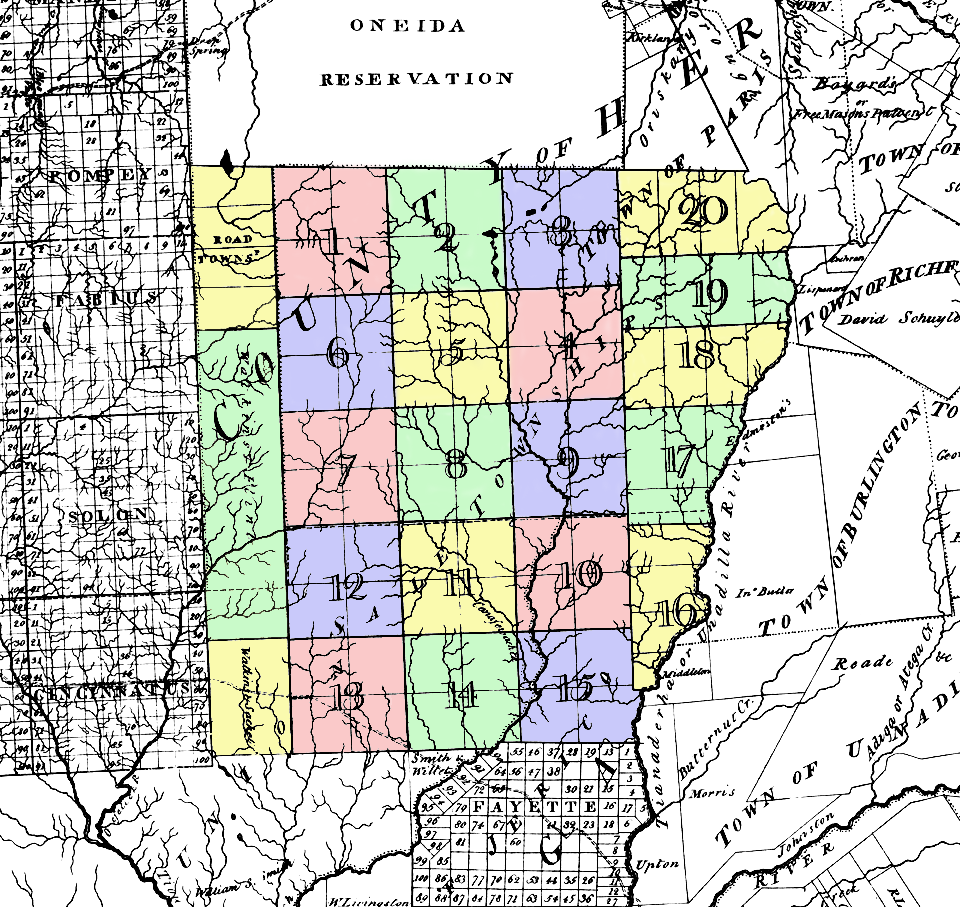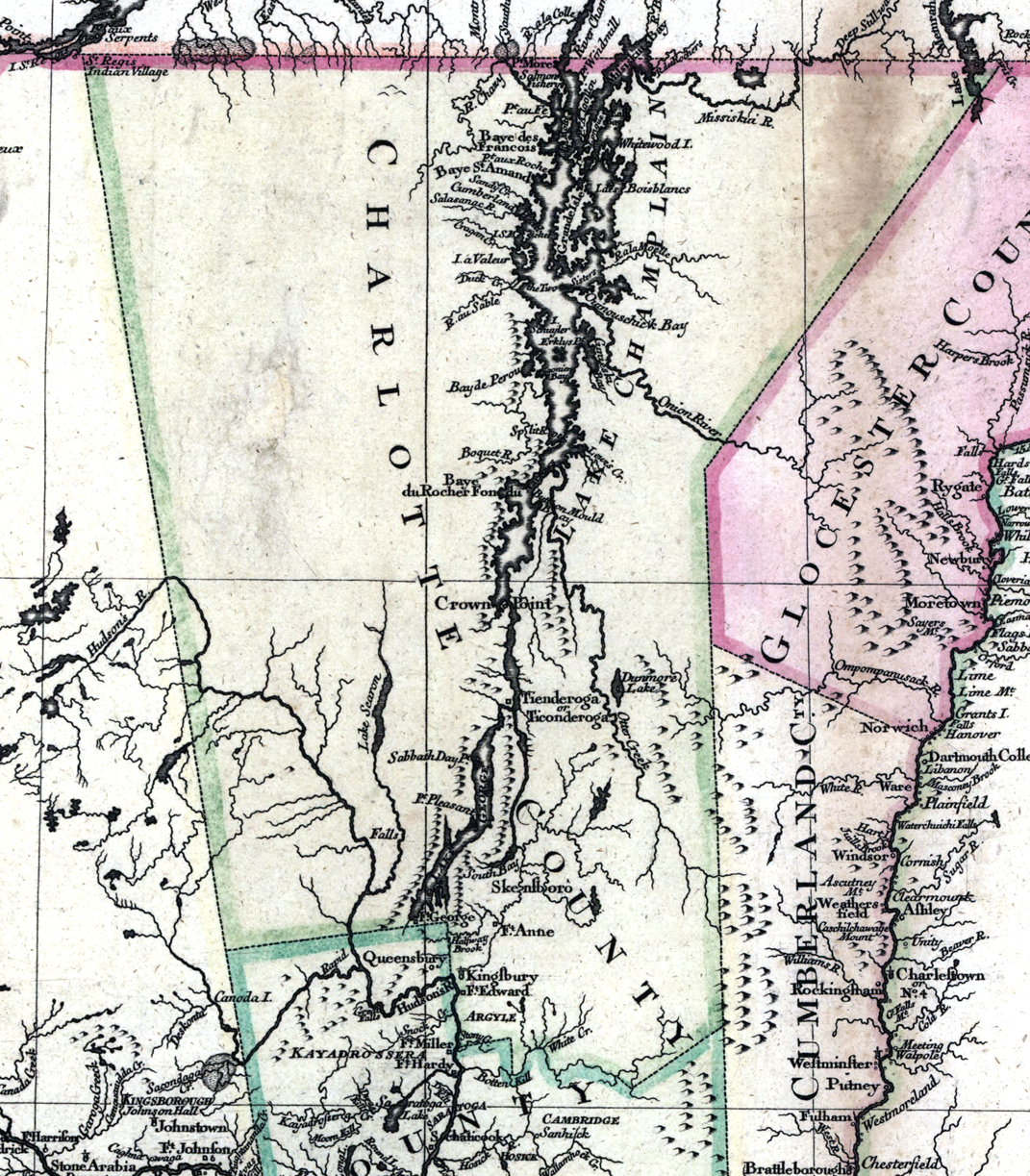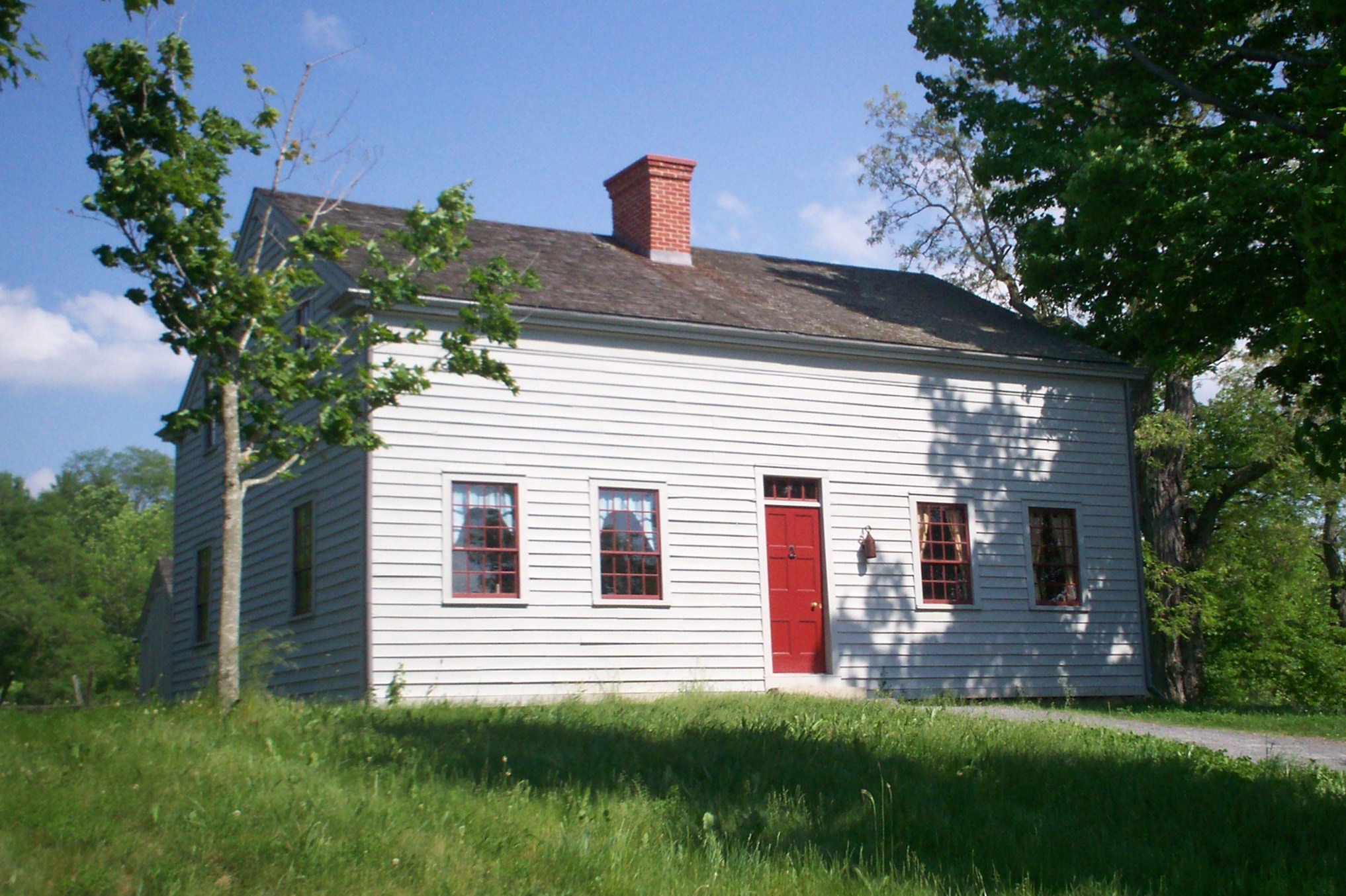|
Chenango County, New York
Chenango County is a county located in the south-central section U.S. state of New York. As of the 2020 census, the population was 47,220. Its county seat is Norwich. The county's name originates from an Oneida word meaning 'large bull-thistle'. History This was long the territory of the Oneida people, one of the first Five Nations of the Iroquois Confederacy or '' Haudenosaunee''. They occupied the area until after the Revolutionary War, when they were forced off the land, although they had been allies of the patriot colonists. They were granted a small reservation, which settlers continued to encroach on. When English colonists organized counties in 1683 in what is now New York, the present Chenango County was part of Albany County. This was an enormous county, including the northern part of New York State as well as all of the present State of Vermont and, in theory, extending westward to the Pacific Ocean. However, territories located to the west of present-day Pe ... [...More Info...] [...Related Items...] OR: [Wikipedia] [Google] [Baidu] |
Counties Of New York
A county is a geographic region of a country used for administrative or other purposes Chambers Dictionary, L. Brookes (ed.), 2005, Chambers Harrap Publishers Ltd, Edinburgh in certain modern nations. The term is derived from the Old French denoting a jurisdiction under the sovereignty of a count (earl) or a viscount.The Oxford Dictionary of English Etymology, C. W. Onions (Ed.), 1966, Oxford University Press Literal equivalents in other languages, derived from the equivalent of "count", are now seldom used officially, including , , , , , , , and ''zhupa'' in Slavic languages; terms equivalent to commune/community are now often instead used. When the Normans conquered England, they brought the term with them. The Saxons had already established the districts that became the historic counties of England, calling them shires;Vision of Britai– Type details for ancient county. Retrieved 31 March 2012 many county names derive from the name of the county town (county seat) with ... [...More Info...] [...Related Items...] OR: [Wikipedia] [Google] [Baidu] |
Gloucester County, New York
Gloucester County, New York is a former county in New York that became part of the state of Vermont. It was a part of Albany County in the Province of New York The Province of New York (1664–1776) was a British proprietary colony and later royal colony on the northeast coast of North America. As one of the Middle Colonies, New York achieved independence and worked with the others to found the U ... until 1770 and was lost to Vermont in 1777. At that time, Vermont was holding itself out as the Republic of Vermont and did not become a state until 1791. The County of Gloucester name was used occasionally in contemporary documents. Yet the 28 February 1770 Order for Erection and many subsequent documents refer to the region as the County of Glocester. [...More Info...] [...Related Items...] OR: [Wikipedia] [Google] [Baidu] |
Ontario County, New York
Ontario County is a county in the U.S. State of New York. As of the 2020 census, the population was 112,458. The county seat is Canandaigua. Ontario County is part of the Rochester, NY Metropolitan Statistical Area. In 2006, '' Progressive Farmer'' rated Ontario County as the "Best Place to Live" in the U.S., for its "great schools, low crime, excellent health care" and its proximity to Rochester. History This area was long controlled by the Seneca people, one of the Five Nations of the Iroquois Confederacy, or ''Haudenosaunee''. They were forced to cede most of their land to the United States after the American Revolutionary War. When the English established counties in New York Province in 1683, they designated Albany County as including all the northern part of New York State, the present State of Vermont, and, in theory, extending westward to the Pacific Ocean. On July 3, 1766 Cumberland County was organized, and on March 16, 1770 Gloucester County was founded, ... [...More Info...] [...Related Items...] OR: [Wikipedia] [Google] [Baidu] |
Unadilla River
The Unadilla River is a river in the Central New York Region of New York State. The river begins northeast of the hamlet of Millers Mills and flows generally south to the village of Sidney, where it converges with the Susquehanna River, which drains into the Chesapeake Bay, a bay of the Atlantic Ocean. Most of the length of the Unadilla forms the western border of Otsego County and the eastern borders of Chenango and Madison counties, all in New York. This border made up a significant portion of the Fort Stanwix Treaty Line of 1768. It was meant to establish the border for an Indian reserve, beyond which European-American settlers were not supposed to go. Settlers resented British efforts to control their movements, and continued to encroach on Native American territories. Branches The Unadilla has two branches which join at Unadilla Forks on the Otsego-Madison County border. *The main branch of the Unadilla, referred to as the Unadilla River, starts northeast of the haml ... [...More Info...] [...Related Items...] OR: [Wikipedia] [Google] [Baidu] |
Simeon DeWitt Twenty Townships C
Simeon () is a given name, from the Hebrew (Biblical ''Šimʿon'', Tiberian ''Šimʿôn''), usually transliterated as Shimon. In Greek it is written Συμεών, hence the Latinized spelling Symeon. Meaning The name is derived from Simeon, son of Jacob and Leah, patriarch of the Tribe of Simeon. The text of Genesis (29:33) argues that the name of ''Simeon'' refers to Leah's belief that God had heard that she was hated by Jacob, in the sense of not being as favoured as Rachel. Implying a derivation from the Hebrew term ''shama on'', meaning "he has heard"; this is a similar etymology as the Torah gives for the theophoric name ''Ishmael'' ("God has heard"; Genesis 16:11), on the basis of which it has been argued that the tribe of Simeon may originally have been an Ishmaelite group (Cheyne and Black, ''Encyclopaedia Biblica''). Alternatively, Hitzig, W. R. Smith, Stade, and Kerber compared שִׁמְעוֹן ''Šīmə‘ōn'' to Arabic سِمع ''simˤ'' "the offspring of the ... [...More Info...] [...Related Items...] OR: [Wikipedia] [Google] [Baidu] |
Quebec
Quebec ( ; )According to the Canadian government, ''Québec'' (with the acute accent) is the official name in Canadian French and ''Quebec'' (without the accent) is the province's official name in Canadian English is one of the thirteen provinces and territories of Canada. It is the largest province by area and the second-largest by population. Much of the population lives in urban areas along the St. Lawrence River, between the most populous city, Montreal, and the provincial capital, Quebec City. Quebec is the home of the Québécois nation. Located in Central Canada, the province shares land borders with Ontario to the west, Newfoundland and Labrador to the northeast, New Brunswick to the southeast, and a coastal border with Nunavut; in the south it borders Maine, New Hampshire, Vermont, and New York in the United States. Between 1534 and 1763, Quebec was called ''Canada'' and was the most developed colony in New France. Following the Seven Years' War ... [...More Info...] [...Related Items...] OR: [Wikipedia] [Google] [Baidu] |
Richard Montgomery
Richard Montgomery (2 December 1738 – 31 December 1775) was an Irish soldier who first served in the British Army. He later became a major general in the Continental Army during the American Revolutionary War, and he is most famous for leading the unsuccessful 1775 invasion of Quebec. Montgomery was born and raised in Ireland. In 1754, he enrolled at Trinity College, Dublin, and two years later joined the British Army to fight in the French and Indian War. He steadily rose through the ranks, serving in North America and then the Caribbean. After the war he was stationed at Fort Detroit during Pontiac's War, following which he returned to Britain for health reasons. In 1773, Montgomery returned to the Thirteen Colonies, married Janet Livingston, and began farming. When the American Revolutionary War broke out, Montgomery took up the Patriot cause, and was elected to the New York Provincial Congress in May 1775. In June 1775, he was commissioned as a brigadier gener ... [...More Info...] [...Related Items...] OR: [Wikipedia] [Google] [Baidu] |
Montgomery County, New York
Montgomery County is a County (United States), county in the U.S. state of New York (state), New York. As of the 2020 United States census, 2020 census, the population was 49,532. The county seat is Fonda, New York, Fonda. The county was named in honor of Richard Montgomery, an American Revolutionary War general killed in 1775 at the Battle of Quebec (1775), Battle of Quebec. Historically occupied by the Mohawk people, one of the original Five Nations of the Iroquois Confederacy, the county was created in 1772 during the period of British colonial rule as Tryon County, New York, Tryon County. In 1784, after the Americans gained independence in the War, it was renamed Montgomery County for one of the heroes. Montgomery County comprises the Amsterdam (city), New York, Amsterdam, NY Micropolitan Statistical Area. The county borders the north and south banks of the Mohawk River. History This area was occupied by the Mohawk people, Mohawk for hundreds of years prior to European ... [...More Info...] [...Related Items...] OR: [Wikipedia] [Google] [Baidu] |
American Revolutionary War
The American Revolutionary War (April 19, 1775 – September 3, 1783), also known as the Revolutionary War or American War of Independence, was a major war of the American Revolution. Widely considered as the war that secured the independence of the United States, fighting began on April 19, 1775, followed by the Lee Resolution on July 2, 1776, and the Declaration of Independence on July 4, 1776. The American Patriots were supported by the Kingdom of France and, to a lesser extent, the Dutch Republic and the Spanish Empire, in a conflict taking place in North America, the Caribbean, and the Atlantic Ocean. Established by royal charter in the 17th and 18th centuries, the American colonies were largely autonomous in domestic affairs and commercially prosperous, trading with Britain and its Caribbean colonies, as well as other European powers via their Caribbean entrepôts. After British victory over the French in the Seven Years' War in 1763, tensions between the motherlan ... [...More Info...] [...Related Items...] OR: [Wikipedia] [Google] [Baidu] |
Fort Niagara
Fort Niagara is a fortification originally built by New France to protect its interests in North America, specifically control of access between the Niagara River and Lake Ontario, the easternmost of the Great Lakes. The fort is on the river's eastern bank at its mouth on Lake Ontario. Youngstown, New York, later developed near here. The British took over the fort in 1759 during the French and Indian War. Although the United States was ostensibly ceded the fort after it gained independence in the American Revolutionary War, the British stayed until 1796. Transfer to the U.S. came after signing of the Jay Treaty that reaffirmed and implemented the legal border with British Canada. Although the US Army deactivated the fort in 1963, the Coast Guard continues to have a presence here. A non-profit group operates the fort and grounds as a state park and preserves it in part as a museum and site for historical re-enactments. It is also a venue for special events related to the region' ... [...More Info...] [...Related Items...] OR: [Wikipedia] [Google] [Baidu] |
William Tryon
Lieutenant-General William Tryon (8 June 172927 January 1788) was a British Army officer and colonial administrator who served as governor of North Carolina from 1764 to 1771 and the governor of New York from 1771 to 1777. He also served during the Seven Years' War, the Regulator Movement and the American War of Independence. Early life and career William Tryon was born on 8 June 1729 at the Tryon family's seat at Norbury Park, Surrey, the son of Charles Tryon and Lady Mary Shirley. His maternal grandfather was Robert Shirley, 1st Earl Ferrers. In 1751, Tryon enlisted the British Army as a lieutenant in the 1st Regiment of Foot Guards and was promoted to the rank of captain later that year. In 1758, Tryon was promoted to lieutenant-colonel. Seven Years' War During the Seven Years' War, Tryon and his regiment were involved in the British raid on Cherbourg. They landed at Cherbourg and destroyed all military facilities. In September, they reembarked for St Malo, where ... [...More Info...] [...Related Items...] OR: [Wikipedia] [Google] [Baidu] |
Delaware River
The Delaware River is a major river in the Mid-Atlantic region of the United States. From the meeting of its branches in Hancock, New York, the river flows for along the borders of New York, Pennsylvania, New Jersey, and Delaware, before emptying into Delaware Bay. It is the longest free-flowing river in the Eastern United States. The river has been recognized by the National Wildlife Federation as one of the country's Great Waters. The river's watershed drains an area of and provides drinking water for 17 million people. The river has two branches that rise in the Catskill Mountains of New York: the West Branch at Mount Jefferson in Jefferson, Schoharie County, and the East Branch at Grand Gorge, Delaware County. The branches merge to form the main Delaware River at Hancock, New York. Flowing south, the river remains relatively undeveloped, with protected as the Upper, Middle, and Lower Delaware National Scenic Rivers. At Trenton, New Jersey, the Dela ... [...More Info...] [...Related Items...] OR: [Wikipedia] [Google] [Baidu] |








.jpg)

